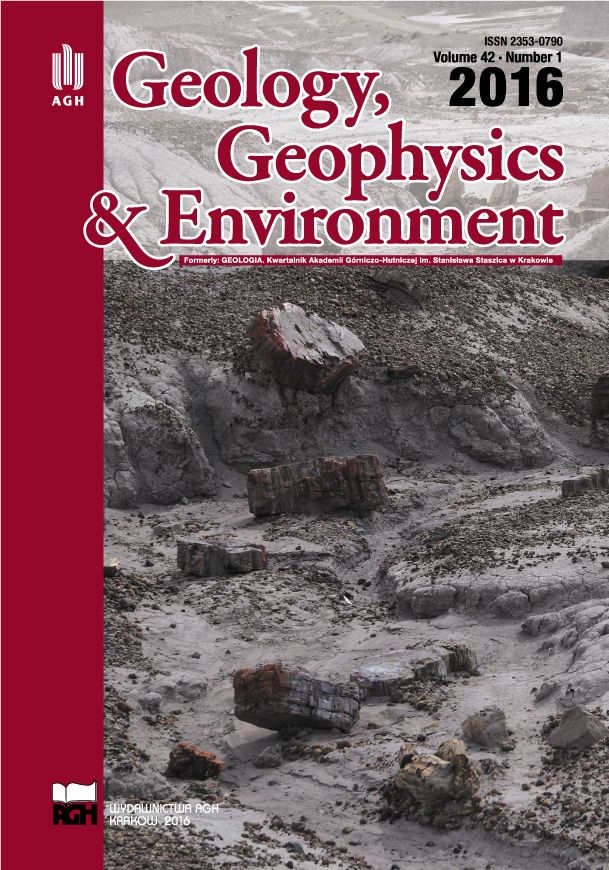The influence of alkali concentration and temperature on chemical activation of halloysite
DOI:
https://doi.org/10.7494/geol.2016.42.1.97Downloads
References
Aldabsheh I., Khoury H., Wastiels J. & Rahier H., 2015. Dissolution behavior of Jordanian clay-rich materials in alkaline solutions for alkali activation purpose. Part I. Applied Clay Science, 115, 238-247.
Slaty F., Khoury H., Wastiels J. & Rahier H., 2013. Characterization of alkali activated kaolinitic clay. Applied Clay Science, 75-76, 120-125
Wang Q., Zhang J. & Wang A., 2013. Alkali activation of halloysite for adsorption and release of ofloxacin. Applied Surface Science, 287, 54-61.
White R. D., Bavykin D. V. & Walsh F. C., 2012. The stability of halloysite nanotubes in acidic and alkaline aqueous suspensions. Nanotechnology, 23, 065705.
Yuan P., Tan D. & Annabi-Bergaya F., 2015. Properties and applications of halloysite nanotubes: recent research advances and future prospects. Applied Clay Science, 112-113, 75-93.
Downloads
Published
Issue
Section
License
Authors have full copyright and property rights to their work. Their copyrights to store the work, duplicate it in printing (as well as in the form of a digital CD recording), to make it available in the digital form, on the Internet and putting into circulation multiplied copies of the work worldwide are unlimited.
The content of the journal is freely available according to the Creative Commons License Attribution 4.0 International (CC BY 4.0)










